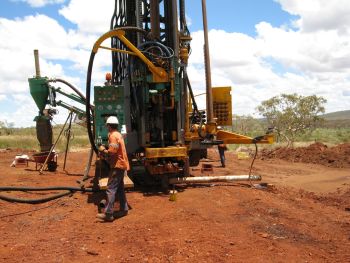Wash Borings: Difference between revisions
Rmanwaring (talk | contribs) (Created page with "<!-- Delete any sections that are not necessary to your topic. Add pictures/sections as needed --> __NOTOC__ ---- {{Picture <!-- Add image file name (ex.image.jpg) --> |image= RC_drill_rig.jpg <!--Add link if applicable --> |link= <!-- Add picture caption --> |caption= Remote-Controlled Drill Rig }} <!-- Introductory paragraph or topic page summary --> "A wash boring is a means of rapidly advancing a hole by striking or rotating, cutting, or chopping tool and...") |
Rmanwaring (talk | contribs) No edit summary |
||
| Line 15: | Line 15: | ||
==Examples== | ==Examples== | ||
{{Document Icon}} [[National Engineering Handbook: Chapter 5 - Engineering Geology Logging, Sampling, and Testing]] | {{Document Icon}} [[National Engineering Handbook: Chapter 5 - Engineering Geology Logging, Sampling, and Testing | National Engineering Handbook: Chapter 5 - Engineering Geology Logging, Sampling, and Testing (NRCS, 2012)]] | ||
<!-- In the location of an in text citation, simply enclose the citation as follows: <ref> citation </ref>. Citations will automatically populate. Learn more at https://www.mediawiki.org/wiki/Help:Cite. --> | <!-- In the location of an in text citation, simply enclose the citation as follows: <ref> citation </ref>. Citations will automatically populate. Learn more at https://www.mediawiki.org/wiki/Help:Cite. --> | ||
Revision as of 16:51, 28 October 2022

|
| Remote-Controlled Drill Rig |
"A wash boring is a means of rapidly advancing a hole by striking or rotating, cutting, or chopping tool and by jetting with water, which is pumped through the hollow drill rod and bit. This method usually requires the use of casing. Cuttings are removed from the hole by the water circulating upward between the drill rod and casing. The cutting tool is alternatively raised and dropped by the tightening and slackening of a line wrapped around a cathead. A tiller attached to the drill rod permits the rod and cutting tool to be rotated. The material brought to the surface in the circulating water is nonrepresentative of materials in place. Consequently, positive identification of particular strata is not possible when holes are advanced by the wash-boring method."[1]
Examples
Citations:
Revision ID: 4057
Revision Date: 10/28/2022
